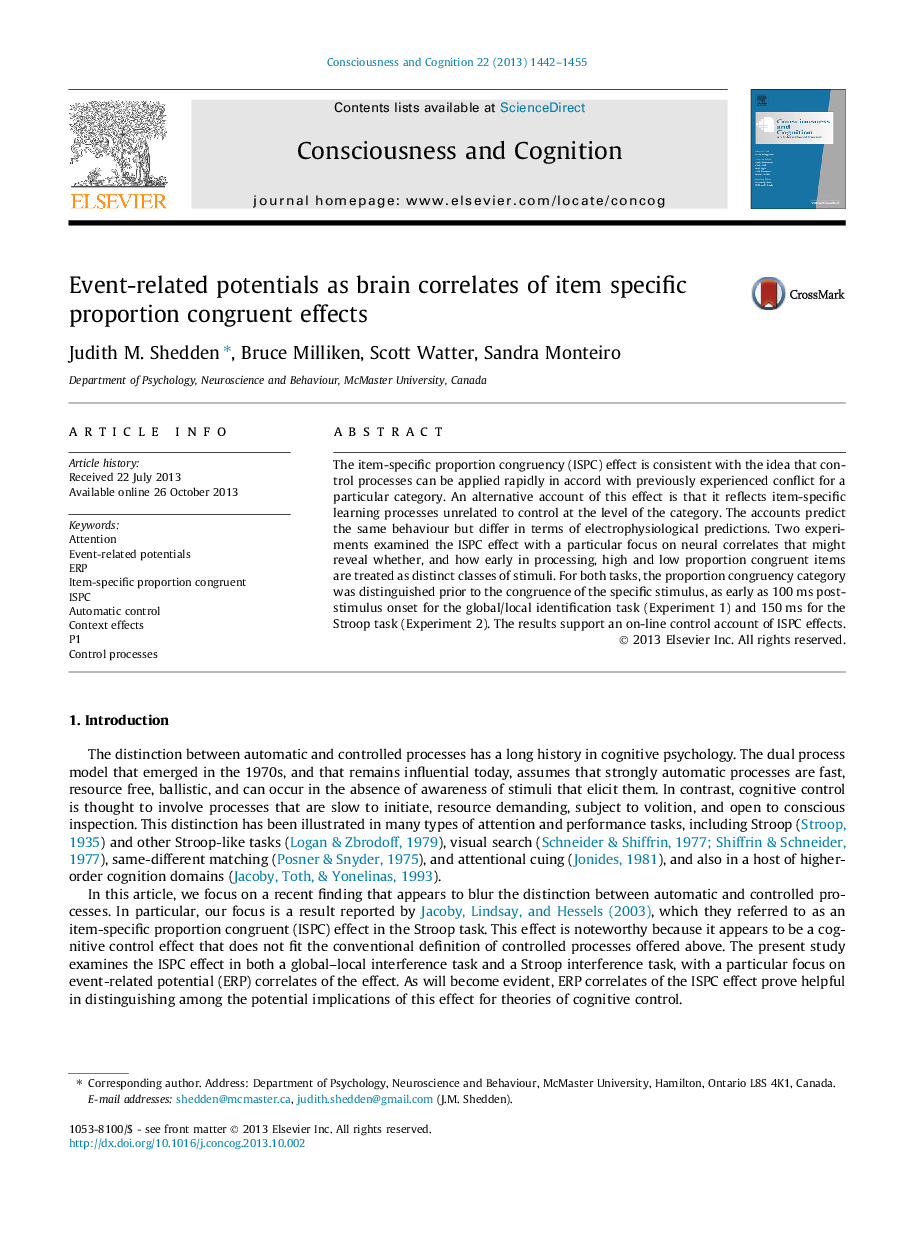| Article ID | Journal | Published Year | Pages | File Type |
|---|---|---|---|---|
| 10458525 | Consciousness and Cognition | 2013 | 14 Pages |
Abstract
The item-specific proportion congruency (ISPC) effect is consistent with the idea that control processes can be applied rapidly in accord with previously experienced conflict for a particular category. An alternative account of this effect is that it reflects item-specific learning processes unrelated to control at the level of the category. The accounts predict the same behaviour but differ in terms of electrophysiological predictions. Two experiments examined the ISPC effect with a particular focus on neural correlates that might reveal whether, and how early in processing, high and low proportion congruent items are treated as distinct classes of stimuli. For both tasks, the proportion congruency category was distinguished prior to the congruence of the specific stimulus, as early as 100Â ms post-stimulus onset for the global/local identification task (Experiment 1) and 150Â ms for the Stroop task (Experiment 2). The results support an on-line control account of ISPC effects.
Related Topics
Life Sciences
Neuroscience
Cognitive Neuroscience
Authors
Judith M. Shedden, Bruce Milliken, Scott Watter, Sandra Monteiro,
